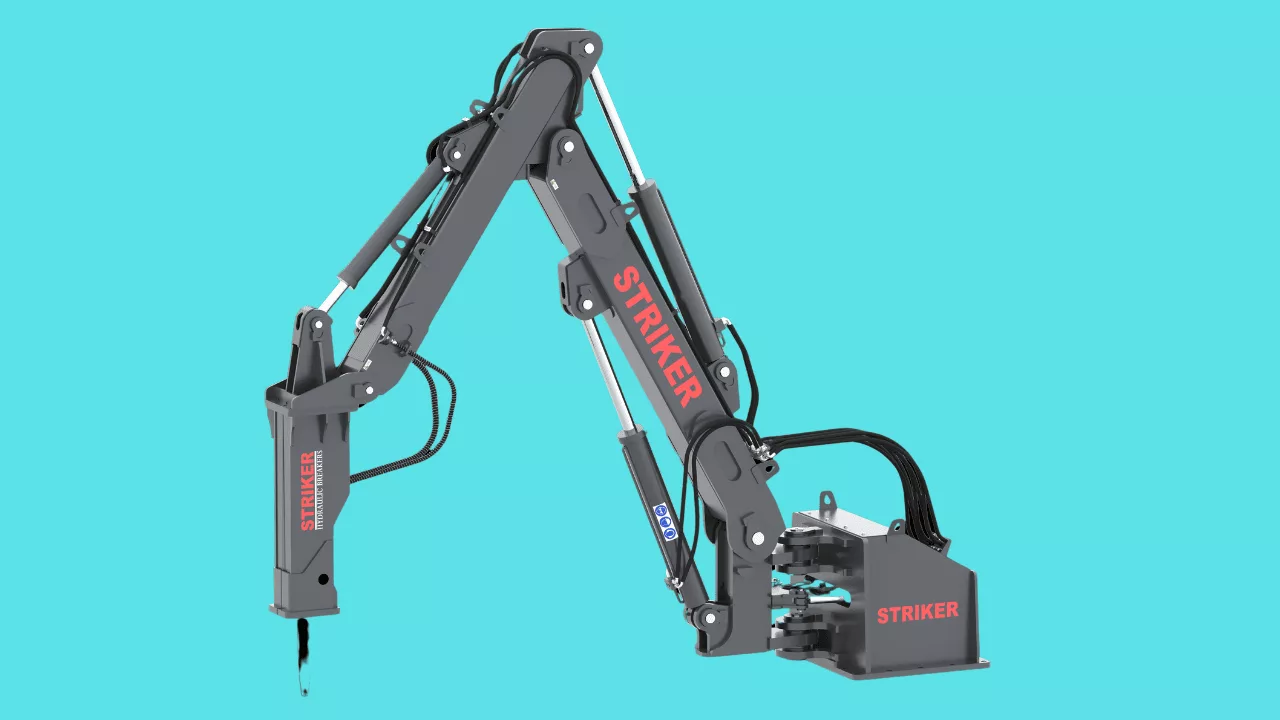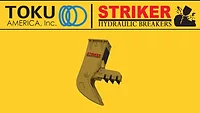Innovative Excavation System Introduced by Toku America
The global excavator breaker market is projected to grow significantly to an estimated $3.5 billion by 2032.

With increased construction activities worldwide, rapid urbanization, and an expanding mining sector, the global excavator breaker market is projected to grow significantly to an estimated $3.5 billion by 2032.
As a result, hydraulic breaker technologies in mining and aggregate applications have evolved rapidly to include advancements that are focused on optimizing breaking efficiency, reducing operating costs, and minimizing downtime on the job.
In an effort to deliver maximum performance and reliability options for this growth trajectory, Toku America, Inc. (TOKU: A Subsidiary of Toku Pneumatic Co. Ltd. Japan), has recently developed its STRIKER Rock Breaker System comprised of Heavy Duty, Mid-Range, and Mobile system options. The efficient and robust systems feature a versatile boom that allows the powerful hydraulic breaker to reach into the crusher’s mouth−effectively reducing oversized boulders and clearing any blockages in the hopper.
By incorporating TOKU’s STRIKER Rock Breaker Systems, mines and quarries around the world can significantly improve safety, productivity, and profitability in their crushing operations. All systems are custom engineered to meet specific crusher and aggregate material application demands in a wide range of sizes and reach− Nominal Max Horizontal Reach FT (M), Max Horizontal Reach FT (M), and Max Vertical Reach FT (M).
Toku America / Rock Breaker System Models:
Heavy Duty Rock Breaker: Essential for permanent rock breaking in demanding environments, these systems provide the safest solution for managing bridging, material build-ups, and oversized rocks.
- Maximizes the hydraulic hammer’s performance potential.
- Shock-absorbing pedestal mount improves stability.
- Advanced control system ensures safety and reliability while remaining user-friendly.
- Constructed from high-strength steel alloys−ensuring durability and resistance to torsion and buckling.
- Durable, heavy-duty hydraulic cylinders enhance productivity over extended periods.
Mid-Range Rock Breaker: Designed to strike an optimal balance between lightweight construction and high capacity. The boom pedestal’s larger footprint enhances stress distribution and strengthens the foundation structures. Generally installed above the opening of a primary crusher.
- User-friendly remote controls for smooth and agile operation.
- Shock-absorbing pedestal mounting.
- Heat-treated conical pins.
- Anti-lunge cushioning in the hydraulic system.
- Unrestricted visibility from the cabin or the operator stand.
- Easy assembly with safe, quick, and straightforward operation.
Bile Rock Breaker: Compact design ideally integrated into portable crushing plants−attaching directly to the mobile crusher’s structure. By clearing bridged rock and breaking oversized materials in the hopper (without the need to halt operations or reposition equipment), these versatile boom systems can boost productivity by up to 30%.
- Fits within transport dimensions.
- Crafted with precision from high-quality materials.
- Turntable-mounted base.
- Heat-treated conical pins.
- Low-profile height and width design−efficient use of space.
- Stable and easy to install.
Toku America/Hydraulic Breaker:
Installed at the end of the boom system, TOKU’s STRIKER TNB hydraulic breakers feature a uniquely simple yet efficient design with only two moving parts−requiring no maintenance. Its advanced “accumulator free” technology delivers exceptional impact energy, long life, and low operating costs. Based on the same design philosophy, it also features a complete range of 15 breakers to match a myriad of demanding aggregate application needs.
- Short, Fully Enclosed Tie Rods.
- Long-Stroke Piston: The most efficient design for energy transfer and recoil reduction.
- Control Valve: “flow through” design reduces hydraulic surge and efficiently controls the breaker operating cycle.
- 50/50 Piston to Tool Weight Ratio: Efficiently transfers the blow energy into the material and reduces recoil.
- Dual Retainer Pins: Correct tool alignment and evens tool wear for longer tool and bushing life.
- Cushion Chamber: Each blow is isolated from the carrier and operator−energy recycled and used for the next blow.
Looking for a reprint of this article?
From high-res PDFs to custom plaques, order your copy today!






